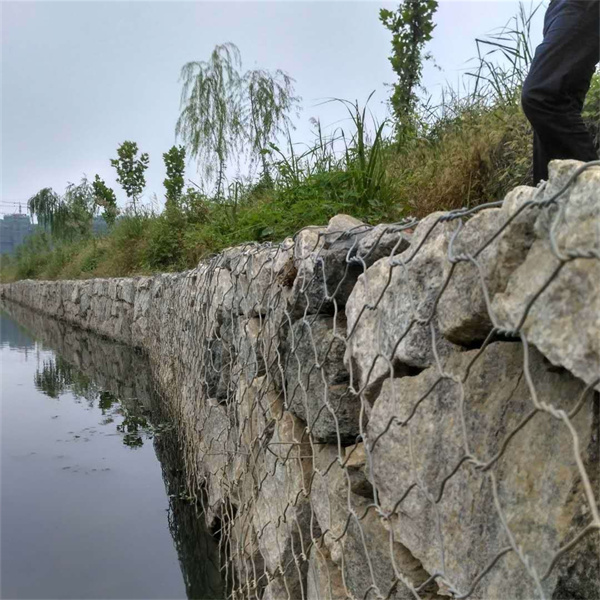Out . 19, 2024 13:23 Back to list
high quality gabion box sizes
Understanding High-Quality Gabion Box Sizes
Gabion boxes have become increasingly popular in construction, landscaping, and environmental management. Their versatility, strength, and aesthetic appeal make them a preferred choice for various applications. Among the critical factors influencing the effectiveness of gabion boxes is their size. In this article, we will explore the different sizes of high-quality gabion boxes and their benefits in various contexts.
What is a Gabion Box?
A gabion box is a cage or container filled with rocks or other materials, primarily used in civil engineering to stabilize structures, control erosion, and manage water flow. Made from steel wire mesh, gabion boxes are designed to withstand harsh environmental conditions, making them ideal for use in rivers, on slopes, and along roadsides.
The flexibility of gabion boxes allows them to be tailored to specific needs, predominantly through size variations. The most common materials used for filling gabions include natural stones, recycled concrete, and even steel, which contribute to their structural integrity.
Key Sizes of Gabion Boxes
Gabion boxes come in various standard sizes, typically measured in dimensions such as height, width, and length. Understanding these dimensions is crucial in selecting the right gabion box for specific projects.
1. Standard Sizes - 2' x 2' x 3' (0.61m x 0.61m x 0.91m) Ideal for small landscaping projects or as decorative features in gardens. These boxes can easily blend into flower beds or serve as small retaining walls. - 3' x 3' x 3' (0.91m x 0.91m x 0.91m) This size is versatile, suitable for both small and medium projects. It can be utilized in erosion control and as part of larger retaining walls. - 6' x 3' x 3' (1.83m x 0.91m x 0.91m) This larger option is perfect for more substantial applications, such as slope stabilization and larger landscaping needs. Its size provides better structural integrity when used for retaining walls along highways or in flood-prone areas. - 8' x 3' x 3' (2.44m x 0.91m x 0.91m) Frequently employed in large construction projects, this size can manage significant pressure and weight, making it suitable for riverbank stabilization or extensive roadwork.
high quality gabion box sizes

2. Custom Sizes - Beyond standard sizes, many manufacturers offer the option to customize gabion boxes to meet specific project requirements. Customization allows for various dimensions that can optimize the design according to the landscape, load requirements, and aesthetic goals.
Benefits of Selecting the Right Size
Choosing the correct size for gabion boxes is crucial for several reasons
- Structural Stability Selecting an appropriate size ensures that the gabion can withstand the loads and pressures it will face. Too small a gabion might fail under stress, while an excessively large one may be inefficient or visually unappealing.
- Cost-Effectiveness Using the right-sized gabion box minimizes waste. Custom sizing can eliminate the need for additional materials or labor, ultimately saving costs.
- Aesthetic Appeal The size and arrangement of gabion boxes can enhance the visual appeal of an area. Carefully planned sizes can provide a more harmonious look in landscaping, making them not just functional but also decorative.
Conclusion
High-quality gabion boxes are an excellent choice for a wide range of applications, thanks to their durability and flexibility. By understanding the various standard and custom sizes available, designers and builders can effectively choose the right gabion box for their projects. This careful selection not only optimizes structural stability and cost-effectiveness but also enhances the overall aesthetic appeal of the landscape. Whether for small gardens or extensive engineering projects, gabion boxes offer a practical and attractive solution for numerous challenges in construction and environmental management.
-
The Role of Galvanized Gabion Mesh in Riverbank Protection
NewsJun.26,2025
-
The Role of Gabion Basket Raised Bed in Sustainable Gardening
NewsJun.26,2025
-
Quality Assurance of Wire Mesh Gabion Baskets
NewsJun.26,2025
-
Installation Guide for Welded Gabion Box
NewsJun.26,2025
-
How to Choose the Right Gabion Box
NewsJun.26,2025
-
Different Types of Gabion Wire Mesh
NewsJun.26,2025
-
Why PVC Coated Gabion Mattress Is the Best Solution for Long-Term Erosion Control
NewsMay.23,2025






